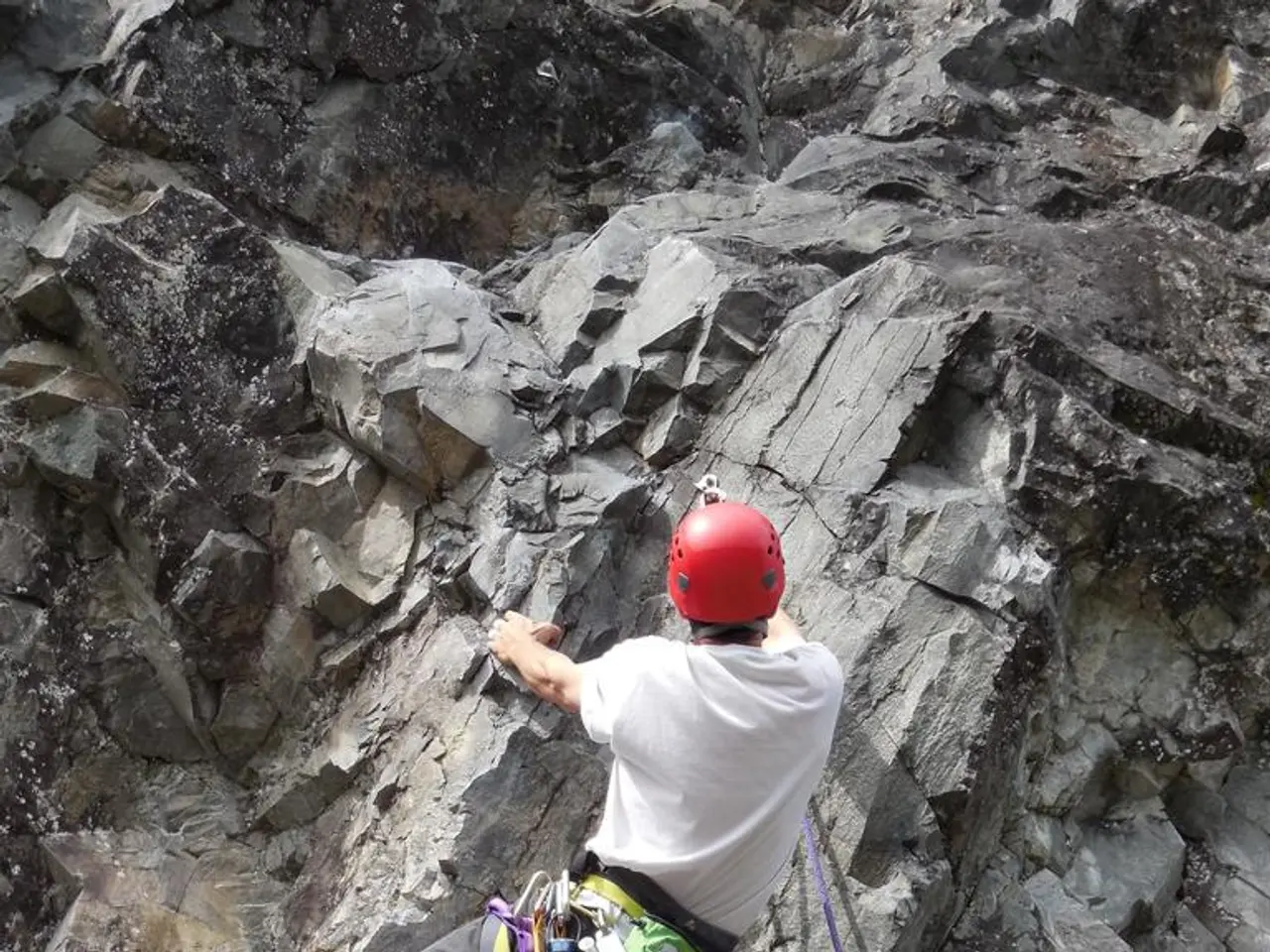Peaking at the right time: An exploration of Mt. Everest's ideal ascending seasons
Climbing Mount Everest: A Guide to the Best Times and Conditions
Mount Everest, the world's tallest mountain, stands at an impressive 8,848.86 meters (29,031.7 feet) above sea level. For those seeking to conquer this majestic peak, understanding the best times to climb is crucial.
The best climbing seasons for Mount Everest are during the pre-monsoon (spring) season from late April to May and the post-monsoon (autumn) season from late September to early November.
Spring Season (April to May)
Spring is the most popular climbing season due to generally favorable weather, clear skies, and stable conditions with less chance of storms or high winds. This season offers mild weather ideal for summit attempts before the monsoon arrives. The blooming rhododendron forests at lower elevations contribute to a pleasant trekking environment.
However, the spring season can be crowded, leading to traffic jams up on the mountain's snowy slopes. The wind speed increases as you gain altitude, becoming more physically taxing after the 8000m (26,246 ft) point. To climb Mount Everest, you must have previous experience climbing peaks higher than 6500m (21,325 ft).
Autumn Season (Late September to Early November)
Autumn is the second-best climbing season, characterized by clear skies and stable weather after the monsoon rains have ended. It is slightly less popular than spring, meaning fewer climbers but a shorter summit window. The weather is crisp and dry, offering excellent views and hiking conditions. It is colder but still suitable for climbing.
Fall is another favorable window to climb Mt. Everest, with the first two weeks of October being the best time to summit Everest. The month of October brings fewer people out to climb, resulting in fewer crowds and easier passage up the mountain.
Avoiding the Monsoon Season and Winter
The monsoon season (June to August) should generally be avoided due to heavy rainfall, unstable weather, increased avalanche risk, and challenging and hazardous climbing conditions. Winter months (December to February) are typically not recommended due to extreme cold and high winds.
Preparing for the Expedition
An experienced local guide is a strict requirement for an Everest expedition. The government of Nepal mandates that climbers get rescue insurance when applying for a permit. To schedule an Everest expedition, share your timeframe, budget, and climbing goals, and a custom plan will be created covering permits, support, weather, and logistics for your best chance at the summit.
Mount Everest is surrounded by some of the tallest peaks, including Lhotse (27,940 ft/8,516 m), Nuptse (25,771 ft/7,855 m), and Changtobse (24,870 ft/7,580 m). The Everest ascent from the Southeast Ridge (starting in Nepal) begins with a trek to the Everest Base Camp at 5,364 m (17,599 ft.).
The Everest climbing season is divided into pre and post-monsoon, with the best times to climb Mount Everest being spring (March-May) and fall (September-November). Climbers must have completed some climbs and expeditions before attempting to summit Mt. Everest.
The Everest Base Camp, Ev-K2-CNR Pyramid, facilitates research on earth and environmental sciences as well as anthropology and medicine. Ongchhu Sherpa, an experienced trekking & mountaineering climber, has scaled different peaks including Mt. Everest and Mt. Cho Oyu.
[1] Tourism Link [2] Expedition Base Camp [3] National Geographic [4] Mountain-Forecast [5] ExWeb
- To conquer the majestic peak of Mount Everest during the tranquil Autumn season (late September to early November), climbers should be prepared for crisp, dry weather, excellent views, and fewer crowds, while also bracing for colder temperatures.
- Anyone aspiring to mount an expedition to Mount Everest should have previous experience in sports like trekking and climbs above 6500m (21,325 ft), as well as employ the services of a knowledgeable guide essential for managing the high-altitude challenges.
- When planning trekking and expeditions in the following seasons - spring (April to May) or autumn (September to November) - climbers should be mindful of the peak climbing conditions, taking into consideration factors such as traffic jams up on the snowy slopes during spring and the shorter summit window in autumn, while also appreciating the blooming rhododendron forests in spring and the clear skies in autumn for enhanced adventure and enjoyment.







